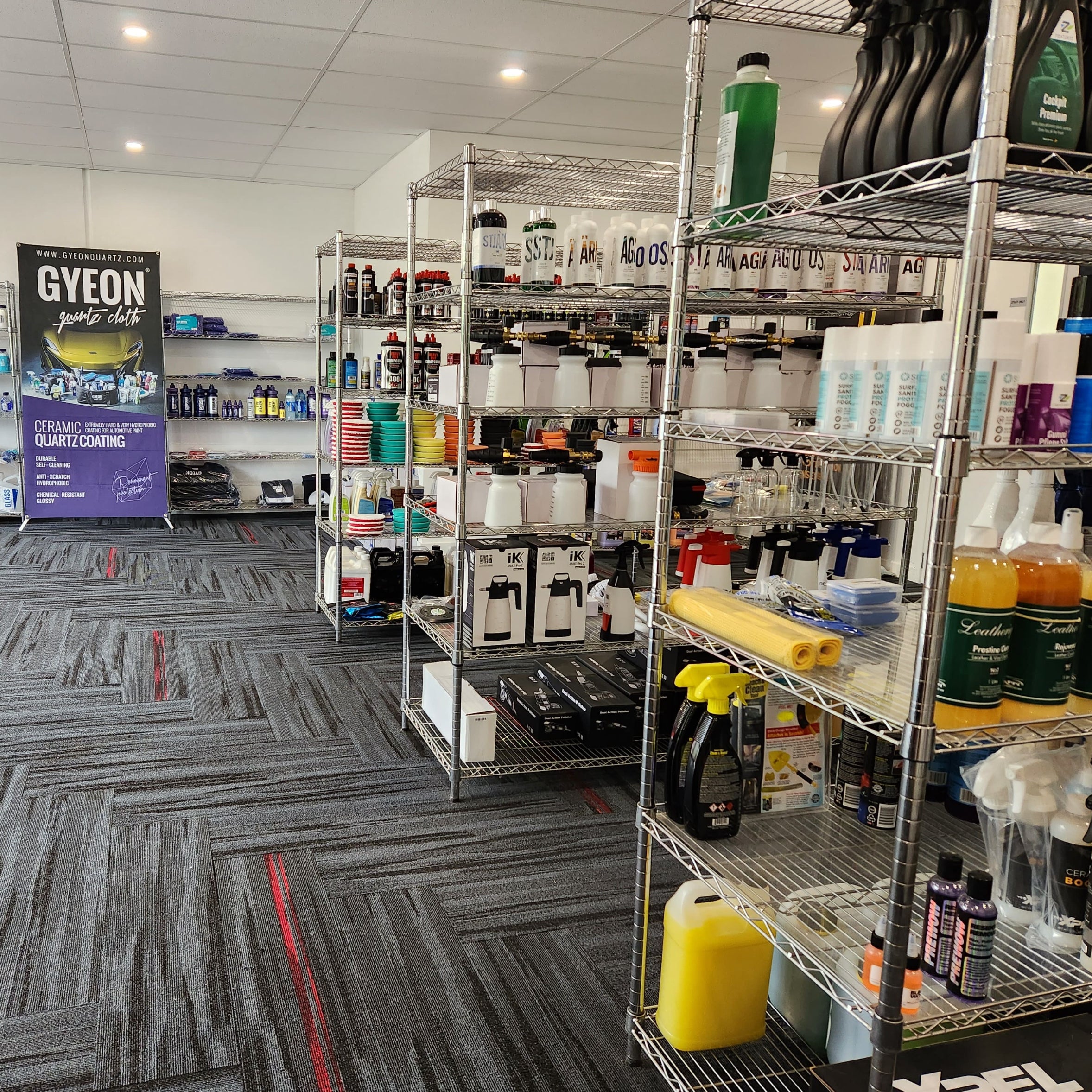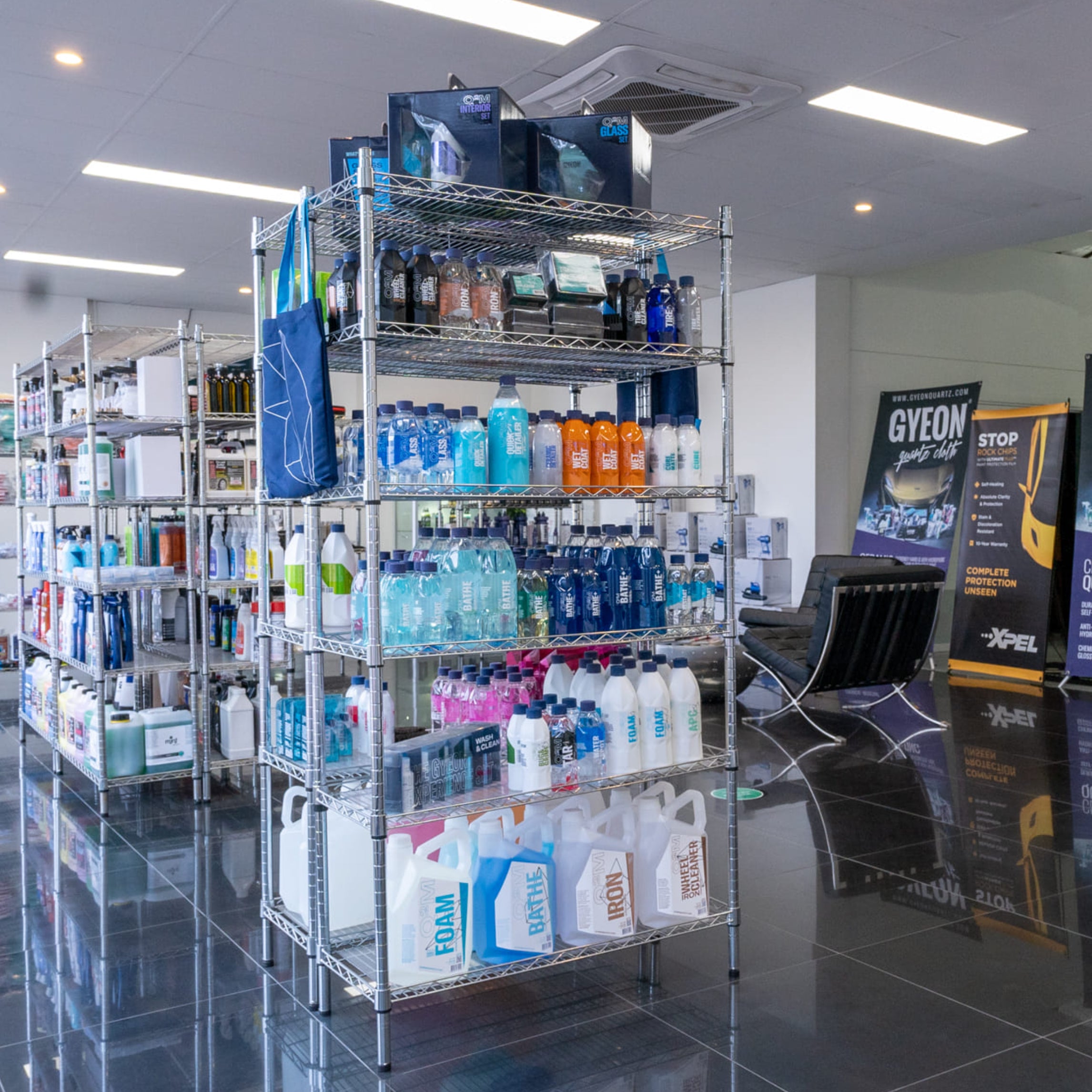If you’ve ever parked your car out of cover during summer for just a few hours, you’ll know how brutal it can be on your interior. Leather seats that once felt soft and luxurious can dry out, fade, and crack before their time. Whether you drive a new European sedan, a daily commuter, or a weekend cruiser, your leather needs real protection against heat, UV rays, and daily wear.

Traditional leather conditioners help for a while, but they simply can’t keep up with Australia’s climate. What your interior really needs is a long-lasting barrier that withstands sunlight, spills, and constant use; that’s where ceramic coating for car leather comes in.
It’s also worth noting that many modern vehicles use synthetic or vegan leather alternatives. These materials might not be traditional hides, but they still require the same level of care and protection. All the cleaning, coating, and maintenance steps outlined here apply just as effectively, helping you keep every surface soft, clean, and well protected from daily wear.
Why Leather Coating Has Become Essential
UV Protection – The Silent Destroyer
Australia’s UV levels are among the harshest in the world. Over time, sunlight breaks down the dyes and oils that give leather its rich colour and soft feel, leading to discolouration and accelerated deterioration. Even a few minutes of exposure every day, at the shops, the beach, or the office, adds up fast. The result? Faded, brittle, and cracked leather that’s hard to restore, affecting the surface durability and lifespan. A ceramic coating creates a shield that blocks harmful UV rays, stopping the slow breakdown before it starts. The difference is visible: colour stays richer, texture stays supple, and your seats don’t feel like a hotplate after sitting in the sun.
Friction and Everyday Wear
Each time you slide in and out of your car, tiny amounts of friction wear away at the surface. Belt buckles, jeans, and even the edge of a handbag can scuff and thin the outer layer of leather. Over time, this leads to shiny, worn bolsters and visible cracking, especially on the driver’s seat.
A ceramic coating helps reduce this friction. It adds a slick, invisible layer that lets fabric glide rather than grab, keeping those high-contact areas looking new for longer.
Spills, Stains and the “Oops” Moments
Sunscreen, coffee, or a soft drink, it only takes one accident to leave a lasting mark. Because leather is naturally porous, liquids and dyes can soak in quickly, leaving dark stains or sticky spots that are difficult to remove. With a ceramic coating, the absorption of such liquids is significantly reduced. There’s no soaking, no staining, and no stress of chemical spills damaging the upholstery. Ceramic coatings are designed specifically to protect against this kind of daily damage and prevent contaminants from causing buildup or deterioration. For comprehensive protection, interior ceramic coating solutions offer a protective sealant that enhances adhesion to the leather’s surface, guarding against everyday mishaps while ensuring ease of cleaning.
How Ceramic Leather Coating Works
Similar to the ceramic coatings you put on your car paint, leather coatings use advanced SiO₂ (silicon dioxide) technology that bonds chemically to the surface of your leather. Once leather coatings are applied, they form a more flexible, transparent film compared to paint coatings that shield against UV rays, friction, and spills, all without changing the natural feel or finish of the seats.
Unlike waxes or conditioners that wear off quickly, ceramic coatings become part of the surface itself. The result is long-lasting protection that keeps leather soft, matte, and easy to clean, usually for a year or more, some up to 2 years.

The Feel and Finish
A common myth is that ceramic coatings make leather shiny or slippery. In reality, quality coatings such as GYEON LeatherShield maintain the factory look, whether that's a satin or matte finish. The surface feels smooth and clean, never greasy or artificial, and stays that way for months, or even years, on end. This approach not only preserves the aesthetic of your car's interior but also provides a subtle gloss that enhances the natural look of dashboard panels and trims.
Moreover, applying a polish followed by a ceramic coating treatment can further protect against scratches, maintaining the paintwork and other surfaces in pristine condition, including often-touched areas like the steering wheel.
Top Benefits of Ceramic Coating for Leather
1. Stops UV Damage and Heat Build-Up
Coated leather resists UV rays, preventing fading and cracking. This protective layer minimises surface deterioration by warding off potential hazards from the sun's rays, thus ensuring added surface durability. It also absorbs less heat, leading to cooler seats on hot days and extending the car's interior lifespan while minimising stress on stitching and seams.
2. Repels Liquids and Stains
From coffee to sunscreen, spills bead and wipe off effortlessly. The hydrophobic layer not only prevents liquid penetration but also minimises absorption and buildup of contaminants. It creates a barrier that protects interior surfaces, including upholstery, from harmful chemical spills.
3. Reduces Friction Wear
Sliding in and out no longer scuffs or abrades the surface. The application of an interior ceramic coating forms a smooth protective layer that significantly enhances surface durability. As a result, car upholstery remains in better condition for longer, contributing to the longevity of your vehicle's interior.
4. Easier Cleaning and Maintenance
Because dirt and grime can’t bond to the surface, upkeep is simple. A quick wipe with a damp microfiber cloth or a gentle car leather cleaner is all you need for convenience. Regular use of a microfiber cloth helps maintain a pristine appearance without the need for harsh chemicals, thereby reducing the frequency of recoating. No more layers of conditioners or scrubbing with harsh chemicals.
5. Protects Resale Value
Buyers notice when a car’s interior has been cared for. Leather that looks soft, clean, and evenly finished can significantly enhance the resale value of your car. Investing in interior protection, such as ceramic coatings, which have gained popularity for their effectiveness, is worth considering as it not only maintains the aesthetic appeal but also protects your prized possession over time.
Applying a Leather Ceramic Coating
Preparation Is Key
After a thorough vacuum to remove all loose particles, start by cleaning the leather thoroughly using a dedicated cleaner such as GYEON LeatherCleaner (available in Natural for lighter or more regular cleaning on newer leather, as well as Strong for tougher stains or on leather older than 12 months) to remove dirt, oils, and residue. Use a soft brush to agitate the surface, then wipe dry with a microfibre towel. Apply the coating once the leather is completely clean and dry.
The preparation stage of coating your leather is super simple. Still, if you skip this step or don't do it properly, any coating you apply will not bond effectively to your leather, resulting in an unappealing finish or reduced protection.
DIY Coating
Thanks to innovations in DIY coatings like GYEON Leather Coat or GYEON LeatherShield, applying leather coatings at home is incredibly straightforward if you have done the right prep work.

Spray-on sealant options like Leather Coat are easier to apply than a typical ceramic coating if you prefer this over longer protection. Simply start by spraying a light mist onto a microfibre applicator pad and wiping it evenly across one section at a time. Allow a few moments for it to bond, then buff gently with a clean cloth for a smooth, natural finish that will last over 3 months.
However, if you are looking for truly long-lasting results, ceramic coating options like LeatherShield are your best bet. Carefully apply over small sections using the applicator block that comes with LeatherShield to ensure even coverage. Let the coating bond for several minutes before wiping away any excess with a clean microfibre towel. It takes a little more time to apply but delivers up to 18 months of durable, ceramic-grade protection.
If you are coating vegan or synthetic leather, we would typically recommend using Gyeon Leather Coat; however, if you are unsure what is going to work best for you, our team of detailing experts are available to assist either in-store or via our site.
How Long Does It Last?
A high-quality ceramic coating can last anywhere from 6 to 18 months, depending on the product, environment, and usage. The lifespan of the coating also depends significantly on factors like the vehicle's condition and maintenance routine. When the time comes, recoating is easy: clean, prep, and reapply. While the initial price tag may vary, regular reapplication when required is a strategic investment to enhance the durability and appearance of the interior.
The Smart Choice for Aussie Conditions
Ceramic coating isn’t just a luxury; it’s a smart investment in keeping your interior looking and feeling new. By blocking UV rays, resisting spills, and reducing wear, it takes the worry out of leather care.
Instead of constantly conditioning or restoring damaged seats, you’re proactively protecting them. For Australian drivers dealing with harsh sunlight, beach trips, and everyday use, a ceramic coating is the ultimate interior upgrade.
Quick Answers
Does it make the leather slippery?
No. Quality coatings preserve the natural feel and grip without that oily finish.
Can I use it on synthetic or vegan leather?
Yes. Many coatings are safe for modern synthetic materials, too. Check the label before applying.
Do I still need to use a conditioner?
Not once coated. Just clean regularly with a mild leather cleaner.
How long before I can sit on it?
Allow at least 12–24 hours for the coating to cure fully.





